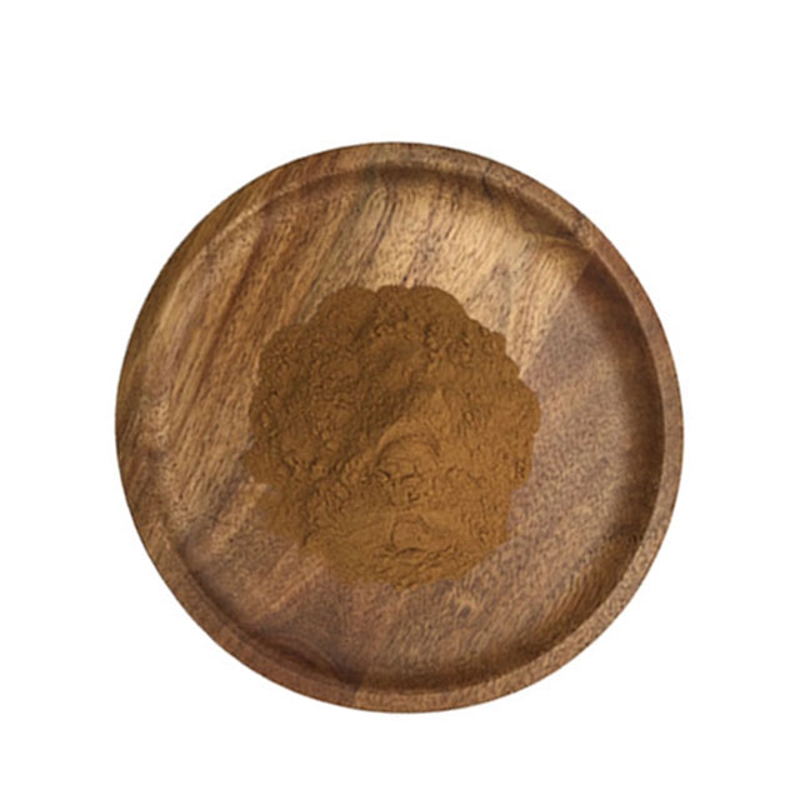-
Categories
-
Pharmaceutical Intermediates
-
Active Pharmaceutical Ingredients
-
Food Additives
- Industrial Coatings
- Agrochemicals
- Dyes and Pigments
- Surfactant
- Flavors and Fragrances
- Chemical Reagents
- Catalyst and Auxiliary
- Natural Products
- Inorganic Chemistry
-
Organic Chemistry
-
Biochemical Engineering
- Analytical Chemistry
- Cosmetic Ingredient
-
Pharmaceutical Intermediates
Promotion
ECHEMI Mall
Wholesale
Weekly Price
Exhibition
News
-
Trade Service
▎Esophageal cancer can be histologically divided into two categories: esophageal squamous cell carcinoma and esophageal adenocarcinoma.
Esophageal squamous cell carcinoma is the main type of esophageal cancer in Asian population, accounting for about 90% of esophageal cancer.
%
.
Esophageal squamous cell carcinoma has a high degree of malignancy and poor prognosis, and platinum-based chemotherapy regimens are limited in first-line treatment for patients with advanced or metastatic esophageal squamous cell carcinoma.
For example, in patients receiving platinum-containing doublet chemotherapy Overall survival is usually <12 months
.
Advanced or metastatic esophageal squamous cell carcinoma urgently needs effective treatment strategies to improve survival prognosis, however, its first-line treatment has made little progress in the past 40 years or so
.
Now, this situation may usher in a major turning point
.
Recently, the important results of the ORIENT-15 study led by Professor Shen Lin from Peking University Cancer Hospital were officially announced in The BMJ
.
The study results showed that regardless of PD-L1 expression status, sintilimab combined with chemotherapy significantly prolonged the median overall survival of patients with advanced or metastatic esophageal squamous cell carcinoma and reduced the risk of death by up to 37%
.
The first-line treatment of esophageal cancer has ushered in a new option of immunocombination chemotherapy
.
Screenshot source: The BMJORIENT-15 is a multicenter, randomized, double-blind, phase 3 trial evaluating sintilimab plus chemotherapy versus placebo plus chemotherapy in first-line treatment of unresectable locally advanced, recurrent, or metastatic esophageal squamous Efficacy and safety of squamous cell carcinoma
.
Between December 14, 2018, and April 9, 2021, the study included 659 patients from 79 medical centers in five countries (China, France, Spain, the United States, and Australia)
.
These patients were adults (age ≥18 years) with unresectable locally advanced, recurrent, or metastatic esophageal squamous cell carcinoma, and none had received systemic therapy
.
Overall, 640 (97%) of the 659 patients were from 66 medical centers in China, and the remaining 19 patients (3%) were from 13 medical centers in other countries or regions
.
▲Research process (Image source: Reference [1]) All patients were randomly assigned in a 1:1 ratio to receive sintilimab combined with chemotherapy (n=327) or placebo combined with chemotherapy (n=332)
.
According to the revision of the trial protocol, the investigator's choice of chemotherapy regimens include cisplatin + paclitaxel, or cisplatin + fluorouracil
.
The primary endpoint of the study is overall survival (OS) in all patients, PD-L1 positive (CPS≥10); secondary endpoints include objective response rate, progression-free survival (PFS), all patients with PD-L1 positive (CPS≥10) Patient duration of remission and safety
.
The study showed that in the sintilimab combined chemotherapy group, a total of 307 patients received the chemotherapy regimen of cisplatin + paclitaxel, and 20 patients received the chemotherapy regimen of cisplatin + fluorouracil; in the placebo combined chemotherapy group, a total of The chemotherapy regimen received by 309 patients was cisplatin + paclitaxel, and the chemotherapy regimen received by 23 patients was cisplatin + fluorouracil
.
The positive rates of PD-L1 in the sintilimab-combination group and the placebo-combination group were 57% and 58%, respectively, and the median follow-up time was 16.
0 and 16.
9 months, respectively
.
The results of the interim analysis showed that all patients and PD-L1-positive patients met the primary endpoint in OS analysis
.
In all patients, the sintilimab combination regimen had a significant advantage in OS compared with the placebo combination regimen, with a median OS of 16.
7 months and 12.
5 months, respectively (HR=0.
63, 95%CI: 0.
51 -0.
78, P<0.
001); in PD-L1 positive patients, the sintilimab combination regimen also significantly improved the median OS of the patients compared with the placebo combination regimen, the data of the two groups were 17.
2 months and 13.
6 months, respectively (HR = 0.
64, 95%CI: 0.
48-0.
85, P=0.
002)
.
▲ In all patients, the OS efficacy curve of receiving sintilimab combination therapy or placebo combination therapy (Image source: Reference [1]) In all patients, sintilimab combination group and placebo combination group The 12-month overall survival rates were 64% and 52%, respectively, and the 24-month overall survival rates were 39% and 16%, respectively; among PD-L1-positive patients, 12 were in the sintilimab combination group and the placebo combination group.
Monthly overall survival rates were 66% and 55%, respectively, and 24-month overall survival rates were 42% and 18%, respectively
.
Overall, sintilimab combined with chemotherapy has a significant OS benefit, and the hazard ratio analysis results of all prespecified subgroups (except PD-L1 CPS <1 subgroup, which may be due to the small sample size) support the results.
Sintilimab combined with chemotherapy
.
In addition, the current trial also met the secondary endpoints of PFS and objective response rate
.
The results of the analysis showed that in all patients, sintilimab combination therapy significantly improved PFS compared with placebo combination therapy, with a median PFS of 7.
2 months and 5.
7 months, respectively (HR=0.
56, 95%CI).
: 0.
46-0.
68, P<0.
001); for PD-L1-positive patients, sintilimab combination therapy also showed a significant efficacy advantage over placebo combination therapy, with a median PFS of 8.
3 months and 6.
4 months, respectively.
month (HR=0.
58, 95%CI: 0.
45-0.
75, P<0.
001)
.
Overall, the combination of sintilimab significantly improved PFS in all prespecified subgroups
.
In addition, among all patients, the objective response rates were 66% and 45% in the sintilimab-combination group and in the placebo-combination group, respectively, and in PD-L1-positive patients, the objective response rates were 68% and 68%, respectively.
49%
.
Both all patients and PD-L1-positive patients had significantly higher objective response rates in the sintilimab combination group
.
In terms of safety, treatment-related adverse events occurred in 321 of 327 patients (98%) in the sintilimab combination group compared to 326 of 332 patients (98%) in the placebo combination group Treatment-related adverse events occurred
.
Grade ≥3 treatment-related adverse events occurred in 60% (196/327) and 55% (181/332) of the sintilimab-combination arm and the placebo-combination arm, respectively
.
The most common grade 3 or higher adverse events were decreased neutrophil count, decreased white blood cell count, anemia, and hypokalemia
.
Overall, the sintilimab combination regimen was well tolerated
.
The paper pointed out that the ORIENT-15 trial confirmed that no matter in all patients or PD-L1 positive patients, sintilimab combined with chemotherapy first-line treatment can bring statistical and clinical significance to patients with advanced or metastatic esophageal squamous cell carcinoma.
OS improvement
.
Not only that, the analysis of PFS, objective response rate, duration of response, etc.
also supported the effectiveness of sintilimab combined with chemotherapy
.
In addition, although the number of patients using cisplatin + fluorouracil in the chemotherapy regimen of sintilimab combined with chemotherapy is relatively small, it also shows similar benefits, so sintilimab combined with cisplatin + fluorouracil is also expected to be effective.
potential treatment options
.







